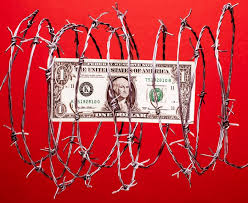Petroyuan: A Seismic Shift Threatening Dollar Dominance

By Imane Dernaika Kamali
University Professor – Political Researcher
It is a matter of fact that the new world order cannot take shape without a radical transformation of the financial system, aligning it with the emerging power dynamics and the ascent of new economic poles.
At the forefront of this transformation stands Saudi Arabia, whose audacious pursuit of economic diversification is poised to redefine the global financial landscape.
Saudi Arabia’s declaration of openness to the petroyuan, a strategic move articulated by the Minister of Industry and Mineral Resources, Bandar Al-Khrife, signals a historic shift with far-reaching implications.
So, what are the underlying motivations driving Saudi Arabia’s decision, as well as its potential ramifications for the global financial system? In other words, what is the significance of the Kingdom’s embrace of the petroyuan?
First, the shift towards alternative currencies is undeniably rooted in the intensifying geopolitical rivalry among global powers, each vying to diminish the US dollar’s hegemony. The escalating trade tensions between the United States and China, coupled with rising inflation and the imposition of economic sanctions, have catalyzed this transformation.
Moreover, China’s economic ascent, coupled with its development of the petroyuan as a viable alternative to the US dollar, poses a significant challenge to the dollar’s dominance. Saudi Arabia’s strategic decision to join the mBridge platform, a financial platform that facilitates rapid and cost-effective transactions, has further strengthened this challenge.

By offering a more efficient alternative to the SWIFT system, China aims to undermine the very foundations of the dollar-centric financial system. Saudi Arabia, as a major oil producer, recognizes the strategic advantage of diversifying its trading partners and currency basket. This move not only grants the Kingdom greater economic autonomy but also encourages other nations to follow suit, potentially reshaping the global economic landscape.
Data from the Wall Street Journal shows that 20% of the world’s oil was purchased with non-dollar currencies in 2023, signaling a tangible decline in the dollar’s dominance within the international trading system.
In addition, the central bank digital currencies (CBDCs) have definitely become a pivotal force in the ongoing paradigm shift away from US dollar dominance, particularly within the oil sector. Nations worldwide are increasingly adopting CBDCs as a digital cash alternative, bolstering the strength of their national currencies on the global stage. CBDCs offer greater flexibility in managing monetary and trade policies, facilitate faster and more efficient transactions, and circumvent the obstacles posed by the traditional financial system, such as sanctions and restrictions on financial transfers.
Last but not the least, it seems that Saudi Arabia’s strategic pursuit of economic diversification aligns seamlessly with the ambitious objectives outlined in “Vision 2030”. By strengthening ties with China and joining the BRICS group, the Kingdom aims to establish a more balanced economic relationship and reduce its dependence on a single power. China, as Saudi Arabia’s largest oil consumer, plays a crucial role in this strategy. The adoption of the yuan in oil transactions represents a significant milestone towards achieving these objectives.
Nevertheless, China’s engagement with Saudi Arabia extends beyond economic cooperation. The agreement to teach the Chinese language in Saudi schools and vice versa underscores China’s strategic intent to enhance its cultural and economic influence in the region. Moreover, China’s support for the construction of a Saudi nuclear reactor represents a pivotal step in deepening bilateral relations in the energy and technology sectors, further solidifying China’s position as a major player in the region.
In conclusion, as the world grapples with the challenges posed by geopolitical tensions and economic uncertainties, the petroyuan offers a potential path towards a more equitable and multipolar financial order. Saudi Arabia’s decision to explore this option, driven by strategic considerations and a desire for greater economic independence and national sovereignty, contributes to a broader shift away from the dominance of a single currency.
The implications of this shift are profound. It could lead to a decline in the US dollar’s global influence, forcing a re-evaluation of international monetary policies. Moreover, it could foster greater economic cooperation between emerging powers, potentially reshaping the geopolitical landscape. The future of the global financial system remains uncertain, but the rise of the petroyuan is a clear indication that the era of unchallenged US dollar hegemony is drawing to a close. As Saudi Arabia and other nations continue to explore alternative currencies and financial arrangements, the world may be on the cusp of a new economic paradigm.

